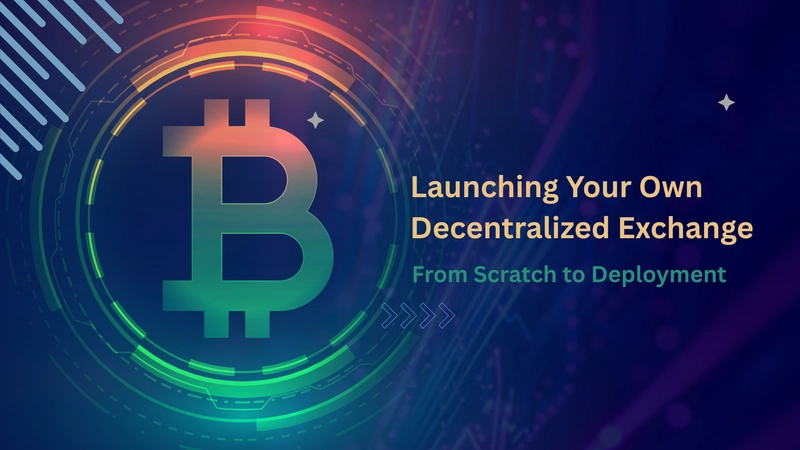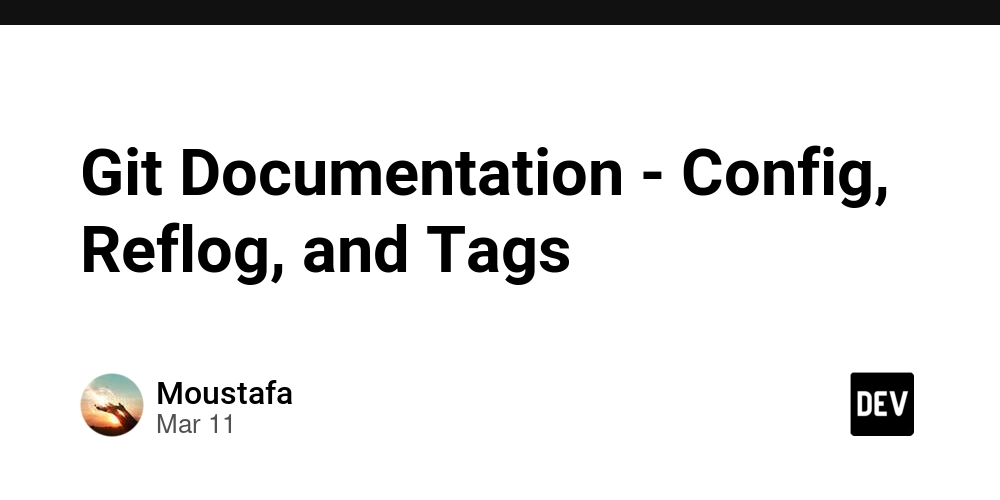Launching Your Own Decentralized Exchange: From Scratch to Deployment
Introduction Decentralized Crypto Exchanges (DEXs) have transformed user trading of digital assets. In contrast to centralized, traditional exchanges, DEXs enable users to trade from their wallets, without intermediaries, and retain complete ownership of their money. With DeFi and blockchain growth, starting a DEX is a new chance for developers and startups to create open, permissionless financial systems. In this blog, we’ll walk through the entire journey of launching your own DEX—from the foundational concepts to development, deployment, and post-launch success. What is Decentralized Crypto Exchange ? A Decentralized Crypto Exchange is a blockchain platform that allows peer to peer cryptocurrency trading without the involvement of centralized third person. This neglect the central authority, giving users full control over their funds. DEX use smart contract to execute trading processes automatically, providing transparency and security. There are various models, such as automated market makers (AMMs) and order book DEXs to create your own decentralized exchange, each with its own mechanisms for enabling trades. Steps to Follow in Decentralized Crypto Exchange In order to start your own decentralized exchange want to adopt these steps: Understanding the Core Components of a Decentralized Crypto Exchange The initial process of launching a DEX involves knowing its building blocks. Central to most DEX is the automated market maker, which facilitates token alternate using liquidity pools instead of standard order books. Typical core features are alternate functionality, liquidity provision, governance controls, and frequently a native token for incentivization. Designing Your Smart Contract Architecture The core of any DEX is its smart contract design. This offering secure and optimized smart contract that execute trading and other basic operations. Functions like token alternate, order matching, and fee mechanism should be implemented with measures. Modular and upgradable architecture makes sure the DEX can survive with future demands. Tokenomics Planning and Bootstrapping Liquidity A thoughtful tokenomics model is crucial in incentivizing engagement and for the long-term viability of the DEX. This entails determining the purpose of the native token, its allocation, and its use within the system. Bootstrapping for initial liquidity is an imperative problem, which typically necessitates novel solutions like liquidity mining and token offerings. For AMM decentralized crypto exchange, effective liquidity pool creation and maintenance is extremely crucial, and consideration of impermanent loss becomes the first thing. Developing and Testing The development process is done through coding, debugging, and extensive testing on testnets. Unit tests and integration tests are critical to ensuring the smart contracts behave as expected. Testing frameworks such as hardhat, foundry, and truffle can make testing easier. A broad testing of cases and testing different trading is important for detecting and fixing exact defects. Securing Your Decentralized Crypto Exchange Security is critical in the development of DEX. In major audit by well established company are necessary to discover and reduce possible defects. Standard security threats, attacks, front running, and unauthorized access. Ensuring strong security protocols and ongoing monitoring are important in order to protect user funds and ensure trust. Static Analysis Tools: Slither MythX Deployment Deployment is a key milestone. Once contracts are checked and security settings are activated, the decentralized exchange is ready to deploy on mainnet. You need to establish a multi sign wallet for contract upgrades or governance, initiate early marketing campaigns, and invite liquidity providers in. After the launch, you should be keep focus on statistics such as total value locked, volume of trades, and user activity via analytics tools like Dune Analytics or The Graph. Post Launch After the DEX has been properly tested and secured, it can be deployed on the mainnet. This means setting up the smart contracts, defining suitable parameters, and having a solid infrastructure. Auditing the smart contract code on the block explorer adds transparency and establishes trust. The process does not stop at deployment. Creating a healthy community, offering regular maintenance, and catering to user feedback are key to the long-term success of the DEX. Difference Between Centralized and Decentralized exchanges Centralized exchanges are controlled by companies that serve as third party, holding users' funds and making trades on their trust. Decentralized exchanges, on the other hand, work through smart contracts and enable users to trade directly from their wallets. Custody DEX: Users own their funds CEX: Exchange holds users funds Control DEX: Code and Community governance CEX: Centralized entity Trading Model DEX: AMM or Hy

Introduction
Decentralized Crypto Exchanges (DEXs) have transformed user trading of digital assets. In contrast to centralized, traditional exchanges, DEXs enable users to trade from their wallets, without intermediaries, and retain complete ownership of their money. With DeFi and blockchain growth, starting a DEX is a new chance for developers and startups to create open, permissionless financial systems. In this blog, we’ll walk through the entire journey of launching your own DEX—from the foundational concepts to development, deployment, and post-launch success.
What is Decentralized Crypto Exchange ?
A Decentralized Crypto Exchange is a blockchain platform that allows peer to peer cryptocurrency trading without the involvement of centralized third person. This neglect the central authority, giving users full control over their funds. DEX use smart contract to execute trading processes automatically, providing transparency and security. There are various models, such as automated market makers (AMMs) and order book DEXs to create your own decentralized exchange, each with its own mechanisms for enabling trades.
Steps to Follow in Decentralized Crypto Exchange
In order to start your own decentralized exchange want to adopt these steps:
Understanding the Core Components of a Decentralized Crypto Exchange
The initial process of launching a DEX involves knowing its building blocks. Central to most DEX is the automated market maker, which facilitates token alternate using liquidity pools instead of standard order books. Typical core features are alternate functionality, liquidity provision, governance controls, and frequently a native token for incentivization.
Designing Your Smart Contract Architecture
The core of any DEX is its smart contract design. This offering secure and optimized smart contract that execute trading and other basic operations. Functions like token alternate, order matching, and fee mechanism should be implemented with measures. Modular and upgradable architecture makes sure the DEX can survive with future demands.
Tokenomics Planning and Bootstrapping Liquidity
A thoughtful tokenomics model is crucial in incentivizing engagement and for the long-term viability of the DEX. This entails determining the purpose of the native token, its allocation, and its use within the system. Bootstrapping for initial liquidity is an imperative problem, which typically necessitates novel solutions like liquidity mining and token offerings. For AMM decentralized crypto exchange, effective liquidity pool creation and maintenance is extremely crucial, and consideration of impermanent loss becomes the first thing.
Developing and Testing
The development process is done through coding, debugging, and extensive testing on testnets. Unit tests and integration tests are critical to ensuring the smart contracts behave as expected. Testing frameworks such as hardhat, foundry, and truffle can make testing easier. A broad testing of cases and testing different trading is important for detecting and fixing exact defects.
Securing Your Decentralized Crypto Exchange
Security is critical in the development of DEX. In major audit by well established company are necessary to discover and reduce possible defects. Standard security threats, attacks, front running, and unauthorized access. Ensuring strong security protocols and ongoing monitoring are important in order to protect user funds and ensure trust. Static Analysis Tools:
- Slither
- MythX
Deployment
Deployment is a key milestone. Once contracts are checked and security settings are activated, the decentralized exchange is ready to deploy on mainnet. You need to establish a multi sign wallet for contract upgrades or governance, initiate early marketing campaigns, and invite liquidity providers in. After the launch, you should be keep focus on statistics such as total value locked, volume of trades, and user activity via analytics tools like Dune Analytics or The Graph.
Post Launch
After the DEX has been properly tested and secured, it can be deployed on the mainnet. This means setting up the smart contracts, defining suitable parameters, and having a solid infrastructure. Auditing the smart contract code on the block explorer adds transparency and establishes trust. The process does not stop at deployment. Creating a healthy community, offering regular maintenance, and catering to user feedback are key to the long-term success of the DEX.
Difference Between Centralized and Decentralized exchanges
Centralized exchanges are controlled by companies that serve as third party, holding users' funds and making trades on their trust. Decentralized exchanges, on the other hand, work through smart contracts and enable users to trade directly from their wallets.
Custody
DEX: Users own their funds
CEX: Exchange holds users funds
Control
DEX: Code and Community governance
CEX: Centralized entity
Trading Model
DEX: AMM or Hybrid
CEX: Order book based
Transparency
DEX: Fully on chain
CEX: Limited
Key Features of Decentralized Crypto Exchange
A good Decentralized Crypto Exchange has a number of key features. That turns your dex into the next level platform.
- Permissionless Trading: Enables anyone to trade assets without approval or registration
- Non-Custodial: This architecture guarantees users always maintain control over their funds
- Incentive Mechanisms: Incentive mechanisms such as yield farming reward user engagement, While transparency due to on-chain activity fosters trust.
- Transparency: Lead communities to decide the future of the protocol through proposal and voting.
Benefits of Decentralized Crypto Exchange
The benefits of DEX lie in the decentralized nature. These are high security and privacy since the users have control over their money and data.
- Censorship Resistance: There is no central authority that can freeze funds or limit access.
- Worldwide Accessibility: Everyone with a wallet can access it.
- Reduced Fees in Certain Instances: Particularly with Layer 2 integrations.
- Fast Innovation: Developers can innovate upon composable protocols.
- High Privacy: No signing up or collection of personal data.
Conclusion
Decentralized exchanges are a revolution in the world of finance, providing a secure, transparent, and user friendly way to trade. As the DeFi universe keeps growing, DEXs are set to become more central to the shaping of the financial future. With knowledge of the essential building blocks, crafting effective smart contracts, and focusing on security and community involvement, you can effectively build your own decentralized crypto exchange and be part of the expansion of this revolutionary technology.










































































































































































![[The AI Show Episode 144]: ChatGPT’s New Memory, Shopify CEO’s Leaked “AI First” Memo, Google Cloud Next Releases, o3 and o4-mini Coming Soon & Llama 4’s Rocky Launch](https://www.marketingaiinstitute.com/hubfs/ep%20144%20cover.png)


















































































































![[DEALS] The All-in-One Microsoft Office Pro 2019 for Windows: Lifetime License + Windows 11 Pro Bundle (89% off) & Other Deals Up To 98% Off](https://www.javacodegeeks.com/wp-content/uploads/2012/12/jcg-logo.jpg)





































![Is this too much for a modular monolith system? [closed]](https://i.sstatic.net/pYL1nsfg.png)






















































































































_Andreas_Prott_Alamy.jpg?width=1280&auto=webp&quality=80&disable=upscale#)
































































































![What features do you get with Gemini Advanced? [April 2025]](https://i0.wp.com/9to5google.com/wp-content/uploads/sites/4/2024/02/gemini-advanced-cover.jpg?resize=1200%2C628&quality=82&strip=all&ssl=1)













![Apple Shares Official Trailer for 'Long Way Home' Starring Ewan McGregor and Charley Boorman [Video]](https://www.iclarified.com/images/news/97069/97069/97069-640.jpg)
![Apple Watch Series 10 Back On Sale for $299! [Lowest Price Ever]](https://www.iclarified.com/images/news/96657/96657/96657-640.jpg)
![EU Postpones Apple App Store Fines Amid Tariff Negotiations [Report]](https://www.iclarified.com/images/news/97068/97068/97068-640.jpg)
![Apple Slips to Fifth in China's Smartphone Market with 9% Decline [Report]](https://www.iclarified.com/images/news/97065/97065/97065-640.jpg)




































































































































